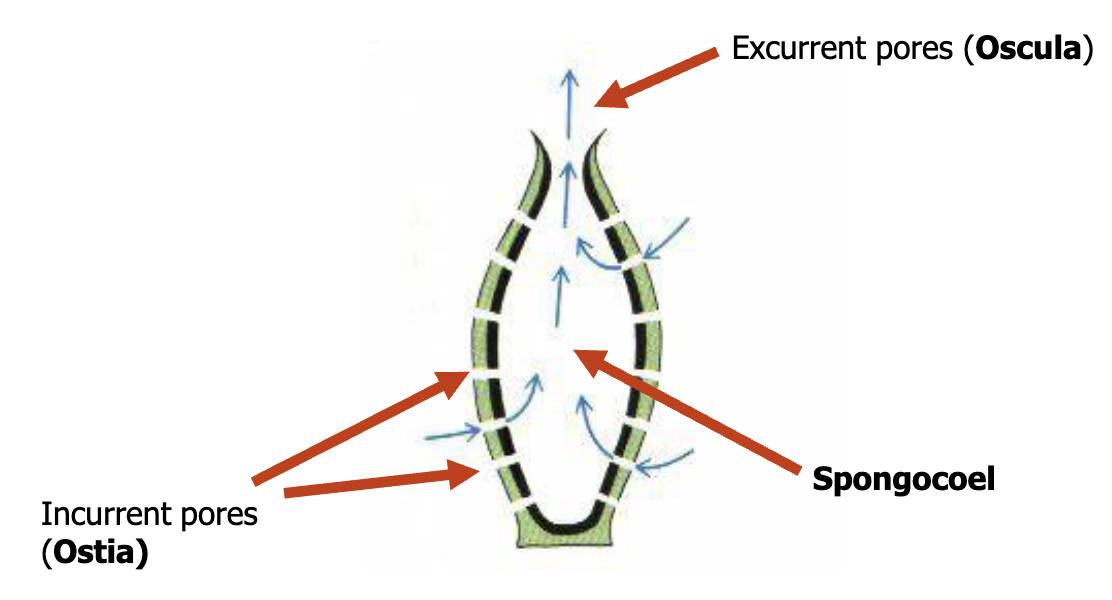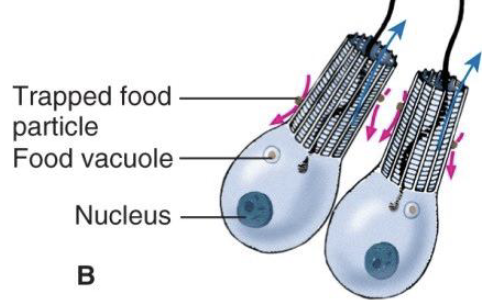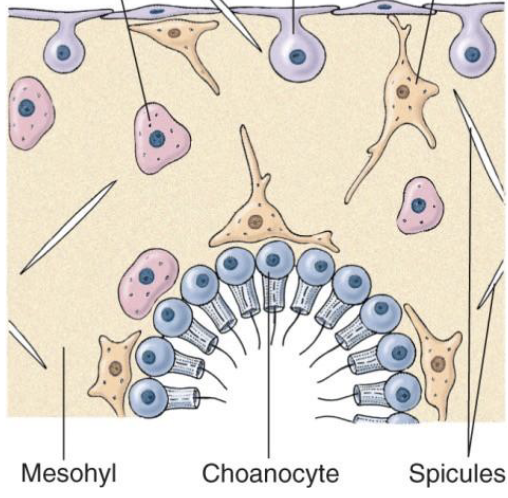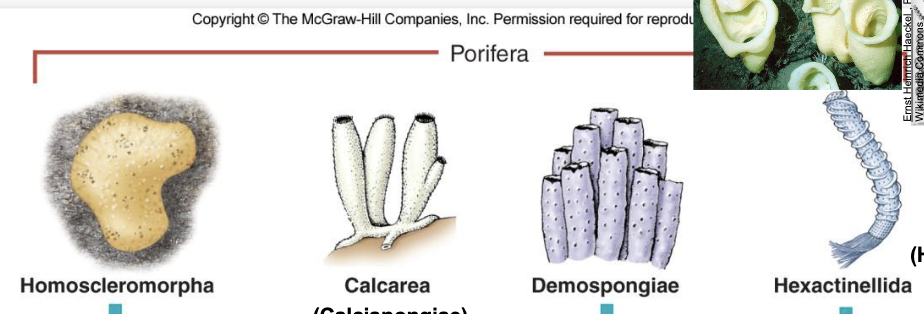BIOL 2003: Lesson 2 (Porifera)
1/22
Earn XP
Description and Tags
Porifera
Name | Mastery | Learn | Test | Matching | Spaced |
|---|
No study sessions yet.
23 Terms
Porifera
meaning pore bearing
sessile filter feeders
5000-8000 species of sponges
most are marine
few live in brackish water
Aquiferous system

system by which the sponge body is able to efficiently filter water
uses flagellated collar cells (choanocytes) to move water
Choanocytes
flagellated collar cells used to move water for currents and feeding

Archaeocytes
totipotent amoeboid cells in mesohyl
can become cells that
phagocytosize
make spicules
make spongin
make collagen
used for reproduction
Totipotent
stem cells can give rise to any of the 220 cell types found in an embryo
Mesohyl
the gelatinous, jelly-like matrix that fills the space between the inner and outer cell layers of a sponge

Canal systems
Asconoid
Syconoid
Leuconoid
Asconoid
canal system ONLY in calcarea
choanocyte-lined spongocoel (large, central, water-filled cavity within a sponge where water enters, flows over choanocytes, and then exits through a larger opening called the osculum)
Syconoid
canal system ONLY in calcarea
choanocyte-lined canals of folded inner layers
Leuconoid
choanocyte lined chambers
in all classes
Sponge skeletons
collagen fibres in all sponges
some have specific collagen fibres: spongin
spicules
act as a taxanomic fingerprint, which allows us to differentiate classes, even down to the species level
allows deter-ration of predators
Porifera taxonomy
homoscleromorpha
calcarea
demospongiae
hexactinellida

Porifera feeding
intracellular digestion via phagocytosis
some may be carnivorous
no choanocytes
microscopic hooks snare unsuspecting prey
137 carnivorous species
Porifera symbioses
long-term, physically close relationships between sponges and other organisms (microbial communities to larger animals)
mutualistic
microbes providing nutrients and sponges offering a home
commensalistic
small shrimp living in sponges
Reproduction
both asexual and sexual
Porifera sexual reproduction
sperm from choanocytes released into water and taken in by another sponge
oocytes are released from archarocytes
oocytes act as an ovary
Porifera asexual reproduction
budding
dormant gemmules
Human importance
first non-food item harvested from the ocean
pharmaceutical importance
Porifera tissue
lack true tissues and organs
Porifera symmetry
asymmetrical
Porifera body cavity
no body cavity
Porifera development
Porifera segmentation
no true segmentation